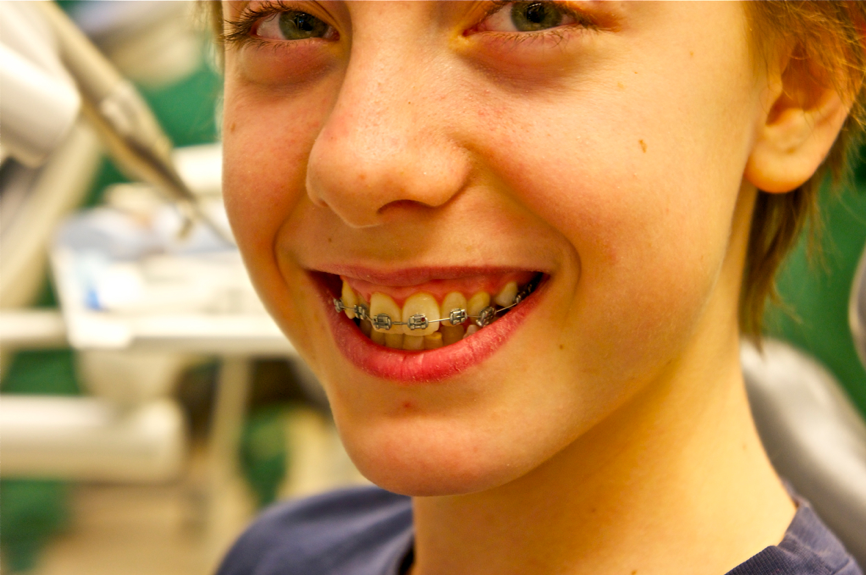Why Cumming Invisalign is the Perfect Option for a Discreet Orthodontic Service
Why Cumming Invisalign is the Perfect Option for a Discreet Orthodontic Service
Blog Article
Comprehensive Guide to Orthodontics Procedures for Remedying Dental Misalignments
Understanding the intricacies of each treatment, including their systems, advantages, and possible downsides, is essential in making educated choices regarding one's orthodontic therapy. As we browse via the comprehensive guide to orthodontic procedures for correcting dental misalignments, the elaborate details of each approach will certainly unfold, losing light on the path towards a harmonious and useful dental positioning.
Orthodontic Procedures Introduction

In addition to typical braces and clear aligners, orthodontists might likewise advise various other treatments like headgear, palatal expanders, or retainers to resolve details placement problems (orthodontics). These procedures are tailored per client's special demands and might entail a mix of therapies to accomplish the wanted results. Regular modifications and monitoring are critical components of orthodontic treatment to guarantee progression gets on track and to make any type of essential adjustments in the process. By going through orthodontic procedures, people can not just attain a straighter smile yet likewise improve their total dental health and wellness and feature.
Conventional Braces: Exactly How They Function
When thinking about orthodontic treatments for dental misalignments, conventional braces attract attention as a tried and true method for dealing with teeth placing. Conventional dental braces are composed of braces, cables, and bands that work with each other to apply continuous stress on the teeth, slowly relocating them right into the desired placement. The brackets are affixed to the teeth making use of a special adhesive, and the wires are threaded through the brackets. By readjusting the tension of the cables, orthodontists can manage the instructions and pressure put on each tooth, assisting them into appropriate positioning over time.
One key facet of exactly how traditional braces work is the procedure of bone makeover. As pressure is put on the teeth through the braces, the bone surrounding the teeth is improved to support the brand-new tooth positions. This remodeling is crucial for the lasting security of the dealt with positioning. Individuals will certainly require routine modifications at the orthodontist's workplace to ensure the dental braces remain to apply the proper stress for reliable teeth motion.
Unnoticeable Aligners: Disadvantages and pros
Unnoticeable aligners supply a discreet and convenient option to traditional braces for remedying oral imbalances. These clear, custom-made trays are virtually undetectable when used, making them an appealing alternative for individuals looking for an extra aesthetically pleasing orthodontic treatment. One of the main advantages of unseen aligners is their removability, enabling simpler maintenance of oral health compared to standard dental braces. Patients can remove the aligners before consuming or brushing their teeth, lowering the threat of food obtaining stuck in the device and simplifying the cleansing procedure.

Surgical Orthodontic Options
Surgical treatments in orthodontics present sensible options for addressing intricate oral imbalances that might not be effectively dealt with via traditional orthodontic therapies. While unseen aligners and traditional dental braces can remedy numerous orthodontic concerns, certain instances need surgical treatment to achieve optimal results. Surgical orthodontic alternatives are usually suggested for severe malocclusions, considerable jaw disparities, and situations where the underlying bone structure needs adjustment to accomplish appropriate alignment.
One typical surgical orthodontic treatment is orthognathic surgical procedure, which entails repositioning the jaws to fix functional problems such as difficulty eating or speaking. This surgery is typically done in cooperation with an orthodontist that assists line top cosmetic dentist up the teeth prior to and after the procedure. Surgical orthodontics might additionally involve treatments to subject impacted teeth, get rid of excess periodontal cells, or reshape the jawbone to create a much more harmonious facial profile.
Prior to taking into consideration surgical orthodontic alternatives, individuals undertake a comprehensive examination to identify the requirement and prospective benefits of such treatments. braces. While surgery may seem overwhelming, it can dramatically boost both the function and aesthetics of the smile in cases where conventional orthodontic treatments fail
Retainers and Post-Treatment Treatment

Failure to conform with post-treatment treatment instructions can result in regression, where the teeth gradually relocate back towards their original settings. Regular retainer wear, great dental hygiene, and normal oral exams are vital for preserving the outcomes achieved through orthodontic surgical procedure and making sure the lasting security of the remedied dental placement.
Conclusion
Finally, orthodontic procedures use various choices for dealing with dental misalignments. Standard braces make use of steel brackets and wires to move teeth into correct alignment. Invisible aligners provide see page a more discreet option yet may not be appropriate for all instances. Surgical orthodontic choices are available for much more serious misalignments. Retainers are commonly made use of post-treatment to keep the new positioning. In general, orthodontic procedures can successfully enhance dental wellness and aesthetic look.
As we navigate through the comprehensive guide to orthodontic treatments for dealing with dental imbalances, the complex details of each technique will unfold, dropping light on the course toward a practical and unified oral alignment. - cumming orthodontist
One of the most common orthodontic treatments is the use of braces, which consist of metal brackets and cords that use gentle stress to slowly move teeth right into the wanted position.When considering read this article orthodontic treatments for oral misalignments, traditional braces stand out as a time-tested technique for fixing teeth positioning. In addition, invisible aligners might not be suitable for complicated orthodontic concerns that need more significant teeth activity, as they are usually advised for moderate to moderate cases. Retainers are personalized orthodontic devices designed to hold teeth in their corrected positions after the conclusion of orthodontic therapy.
Report this page